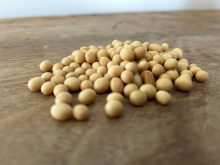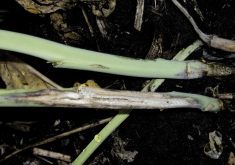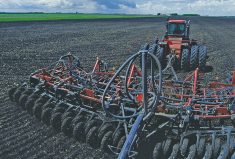The ‘grandparent’ of clubroot resistance in most Canadian canola varieties is resistant to new virulent strains of clubroot — but its offspring aren’t.
“It’s possible that, in the course of breeding, some of the resistant genes were lost,” said provincial research scientist Rudolph Fredua-Agyeman.
European clubroot differential (ECD) 04 is a key source of clubroot resistance for canola-breeding programs around the world, including in Canada, Fredua-Agyeman said at Alberta Canola’s Science-O-Rama last month.
Because of its resistance to all the clubroot strains found in Canada so far, ECD 04 has been bred into most clubroot-resistant canola varieties, including Mendel — a European winter canola cultivar that has also been used as a source of resistance for Canadian varieties.
Read Also

Hail research hopes to benefit potato growers
Alberta research scientist measures hail storm and heat dome affects on potato crops
“When clubroot was found in Alberta, the natural source of resistance was ECD 04 and Mendel, which were resistant to most of the strains of clubroot that we had at the time,” said Fredua-Agyeman.
But in 2013, clubroot strains started to shift to overcome the resistance, and new, more virulent strains of the disease began to appear in Alberta canola fields. As of 2017, these new strains have been confirmed in at least 104 fields in Alberta — a conservative estimate, as researchers only test fields that have been brought to their attention. Most notable of these strains is 5x, which can cause disease severity of up to 90 per cent.
“We’ve found that these strains are causing much more severe disease on canola than the other strains,” said Fredua-Agyeman, adding at least nine other strains have also been identified.
“The challenge posed to the canola industry by these new strains is real and very aggressive.”
The good news is that ECD 04 still shows complete resistance to these new strains, including 5x. Unfortunately, Mendel — and the commercial varieties that were spawned from it — are not.
“We went from ECD 04 — complete resistance — to Mendel, where we’re getting resistance to only 50 per cent of the new strains, and then to the commercial varieties, none of which are resistant to these new strains,” he said. “Not all the resistant genes were passed on from ECD 04 to Mendel, and from Mendel to the commercial varieties.
“The loss of this gene has contributed significantly to the breakdown of resistance.”
Integrated approach needed
Until new resistant varieties can be developed and new resistant sources found, canola growers will need to take a more “integrated” approach to clubroot management.
“Our resistance is very good, but it’s not a magic bullet,” said Stephen Strelkov, a plant pathologist and professor at the University of Alberta.
“Resistance is vulnerable, and we need proper resistance stewardship.”
When clubroot was first discovered in Alberta in 2003, producers were interested in finding a variety of tools to manage the disease. But when the first clubroot-resistant canola variety came online in 2009, farmers began to rely heavily on resistance instead of integrated disease management (which includes equipment sanitation and extended rotations).
“Clubroot resistance was such a strong tool that the extension messaging probably fell on deaf ears a little bit, and farmers grew resistant varieties in very short rotations,” said Strelkov, who also spoke at Science-O-Rama.
“People thought, ‘We have resistant varieties that do so well now — why should we worry about it?’”
But that reliance on resistant varieties has caused resistance to break down in record time. It only takes about two crops of a resistant variety for the pathogen to start to shift to overcome the resistance, and if those two crops are seeded back to back, it takes less than three years for the resistance to break down — not nearly enough time to find new sources of resistance or breed new resistant varieties.
“Resistance is the most widely used management strategy — nothing really compares to genetic resistance,” said Strelkov. “But these new strains highlight that our crop is still at risk from clubroot.”
Researchers are exploring other tools for clubroot management — including soil fumigants, liming, and bait crops — but until producers have more tools to add to their tool box, they need to take care of the ones they already have. That means using resistant varieties, rotating sources of resistance, sanitizing equipment, and (yes) extending rotations to four years.
If they don’t, they risk finding themselves in the same boat if and when new sources of resistance are found.
“It’s not a stable situation. The pathogen is changing and evolving,” said Strelkov.
“We’ll need a more integrated way of thinking to sustainably manage clubroot. Resistance will need to be used in conjunction with other tools.”















